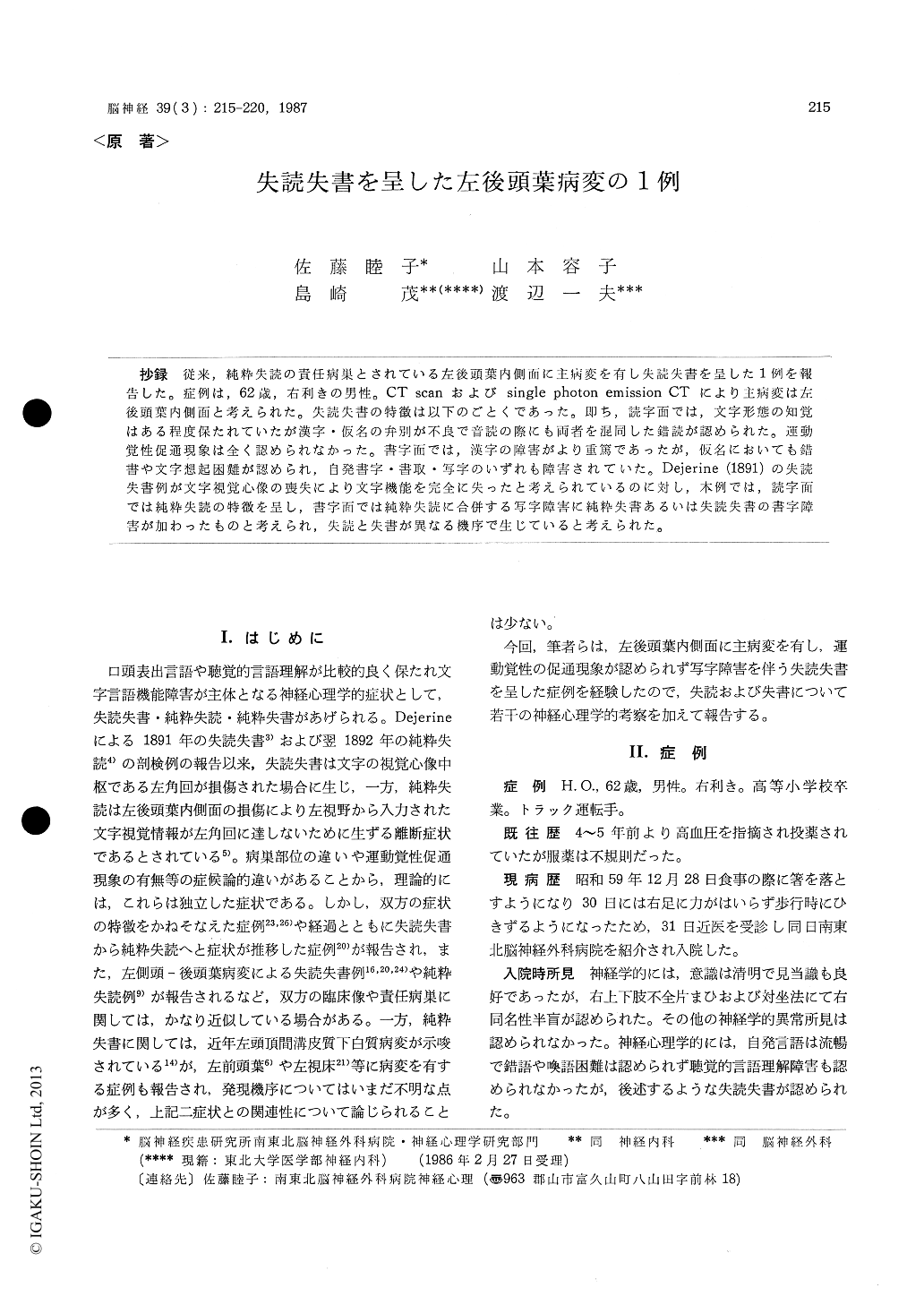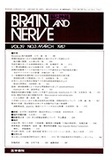Japanese
English
- 有料閲覧
- Abstract 文献概要
- 1ページ目 Look Inside
抄録 従来,純粋失読の責任病巣とされている左後頭葉内側面に主病変を有し失読失書を呈した1例を報告した。症例は,62歳,右利きの男性。CTscanおよびsingle photon emission CTにより主病変は左後頭葉内側面と考えられた。失読失書の特徴は以下のごとくであった。即ち,読字面では,文字形態の知覚はある程度保たれていたが漢字・仮名の弁別が不良で音読の際にも両者を混同した錯読が認められた。運動覚性促通現象は全く認められなかった。書字面では,漢字の障害がより重篤であったが,仮名においても錯書や文字想起困難が認あられ,自発書字・書取・写字のいずれも障害されていた。Dejerine (1891)の失読失書例が文字視覚心像の喪失により文字機能を完全に失ったと考えられているのに対し,本例では,読字面では純粋失読の特徴を呈し,書字面では純粋失読に合併する写字障害に純粋失書あるいは失読失書の書字障害が加わったものと考えられ,失読と失書が異なる機序で生じていると考えられた。
Since Dejerine reported cases of alexia with agraphia in 1891 and of pure alexia in 1892, it is generally said that the former may occur due to the lesion of the left angular gyrus and the lat-ter due to that of the medial inferior area of the left occipital lobe. In this article, we reported a case of alexia with agraphia who had the main lesion in the medial inferior area of the occipital lobe of the left hemisphere.
A 62-year-old right-handed male showed alexia with agraphia. CT scan and single photon emis-sion CT revealed the main lesion in the medial occipital area on the left side. Alexia with agra-phia of the patient was characterized as follows: with regard to reading, though his recognition of forms as letter was nearly spared, he could nei-ther read letters or words nor differentiate Kana-from Kanji-letters. Paralexic errors included con-fusion of Kana and Kanji. He manifested no kine-sthetic facilitation in reading. Regarding writing, his disturbances were more severe in Kanji-writing, but there were paragraphia and difficulty of letter-form evocation even in Kana-writing. He could not write spontaneously or to dictation. His copy-ing of letters was also disturbed. Since it is said that there is no difference between Kana- and Kanji-disturbance in Japanese pure alexics, an as-pect of alexia of the patient may be common to pure alexia. On the other hand, with an aspect of agraphia, it is speculated that agraphia may be followed by a kind of disconnection among as-sociations such as visual image of letters, auditory image of words and kinesthetic image of writing in either alexia with agraphia or pure alexia. Then, agraphia of the patient might be caused by disconnection between visual image and kinesthetic image, or disruption of these images. Consequently, pure alexia might combine alexia with agraphia in the present case.

Copyright © 1987, Igaku-Shoin Ltd. All rights reserved.


